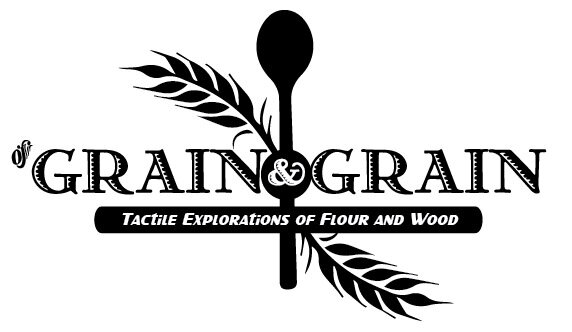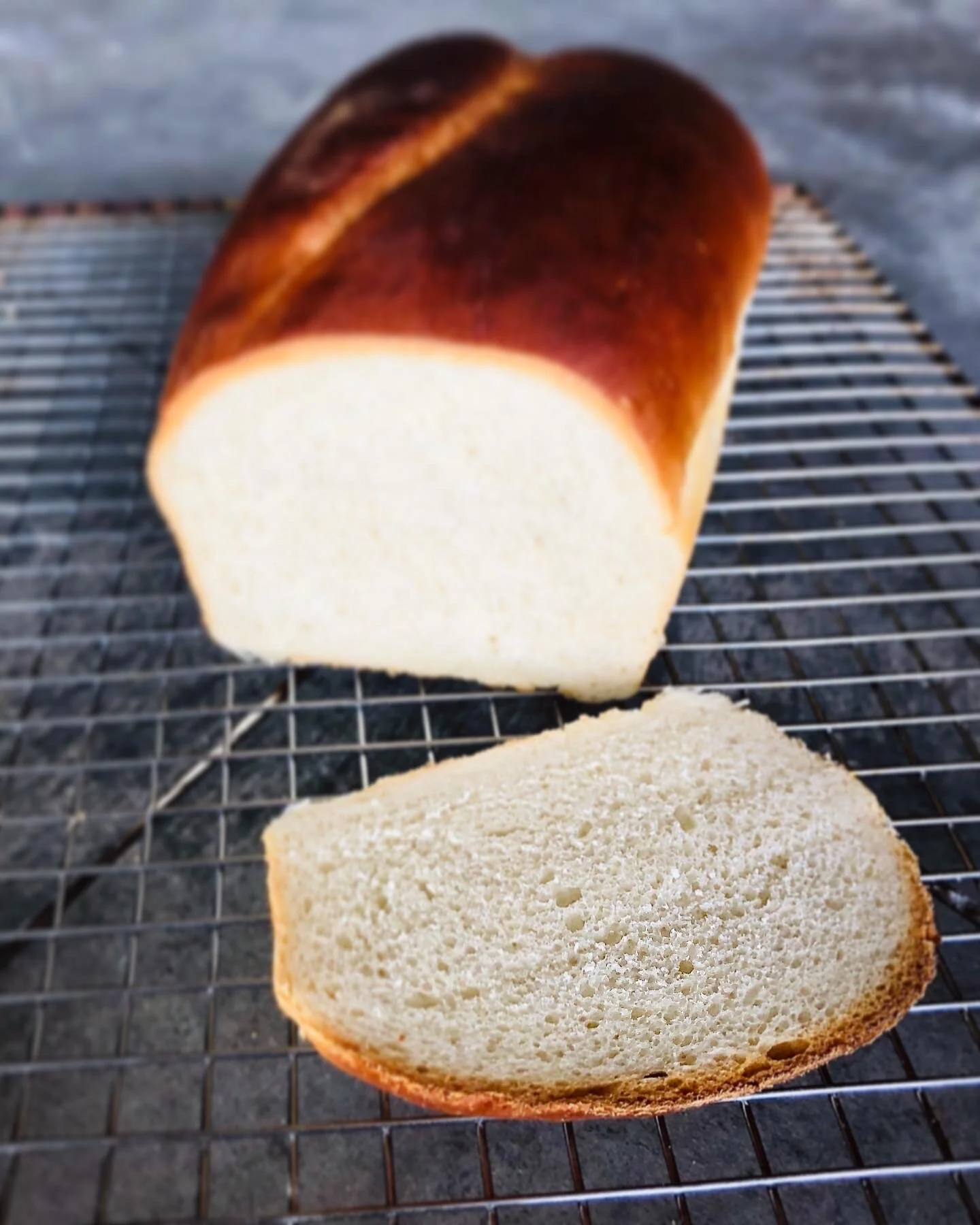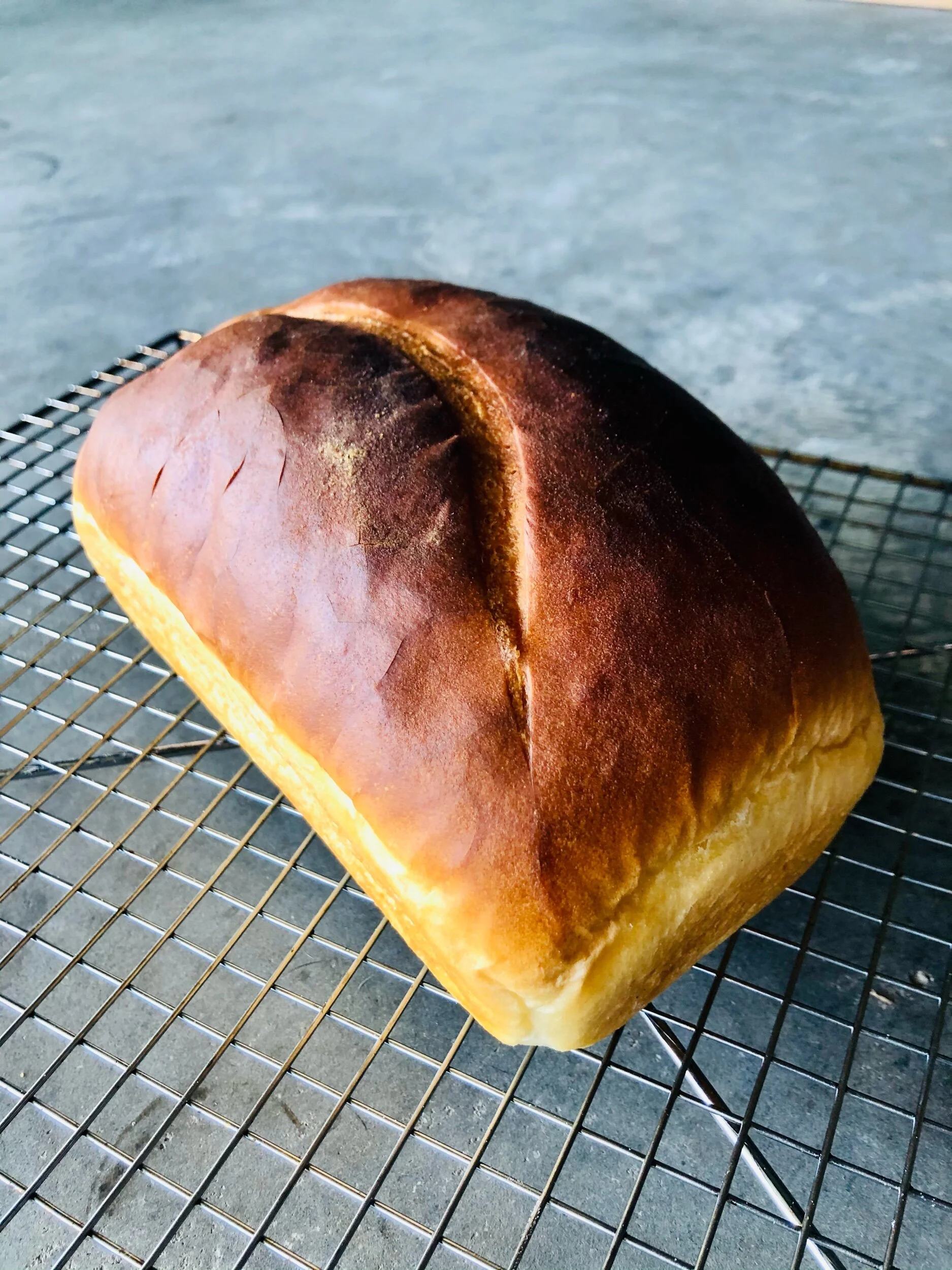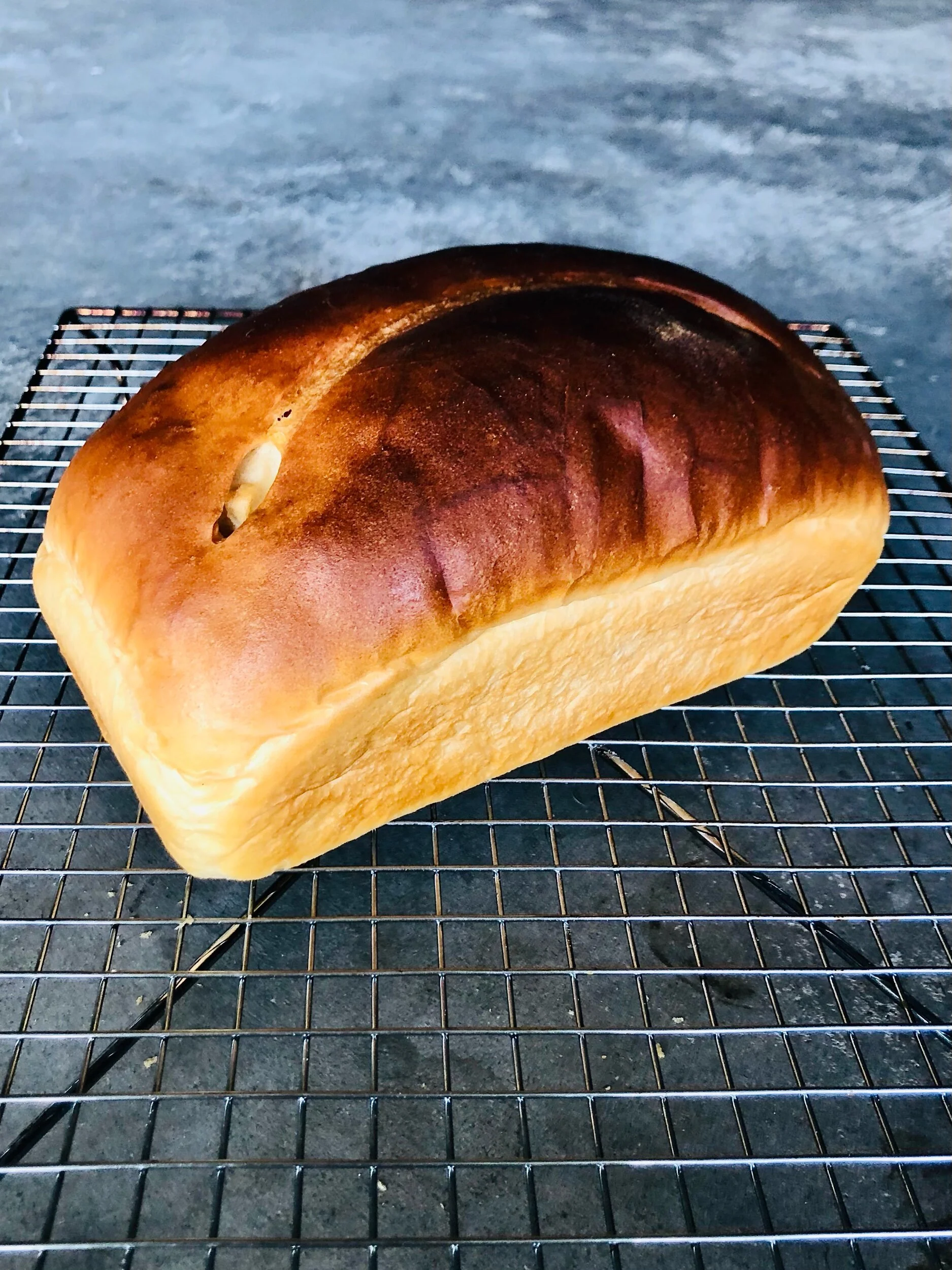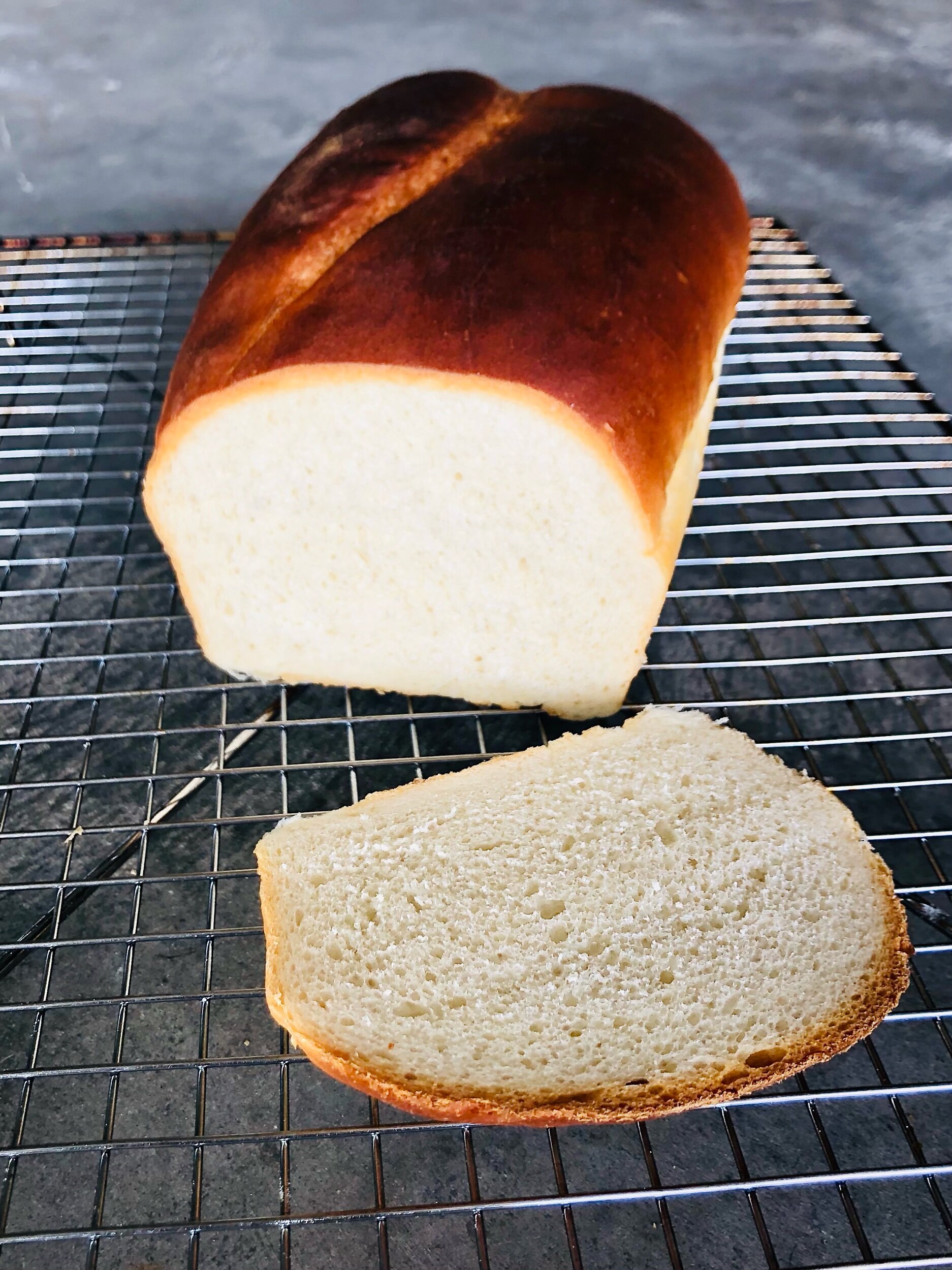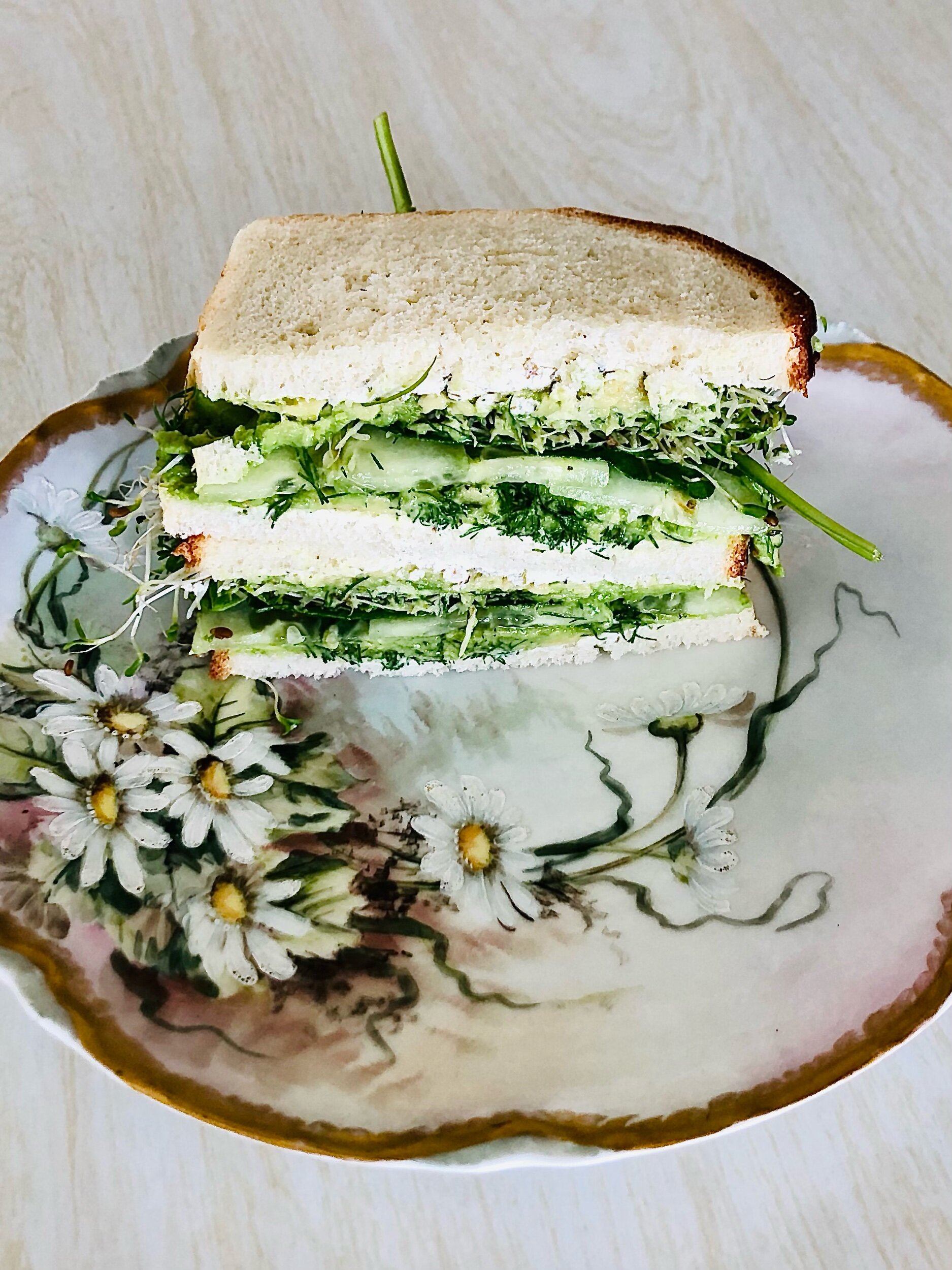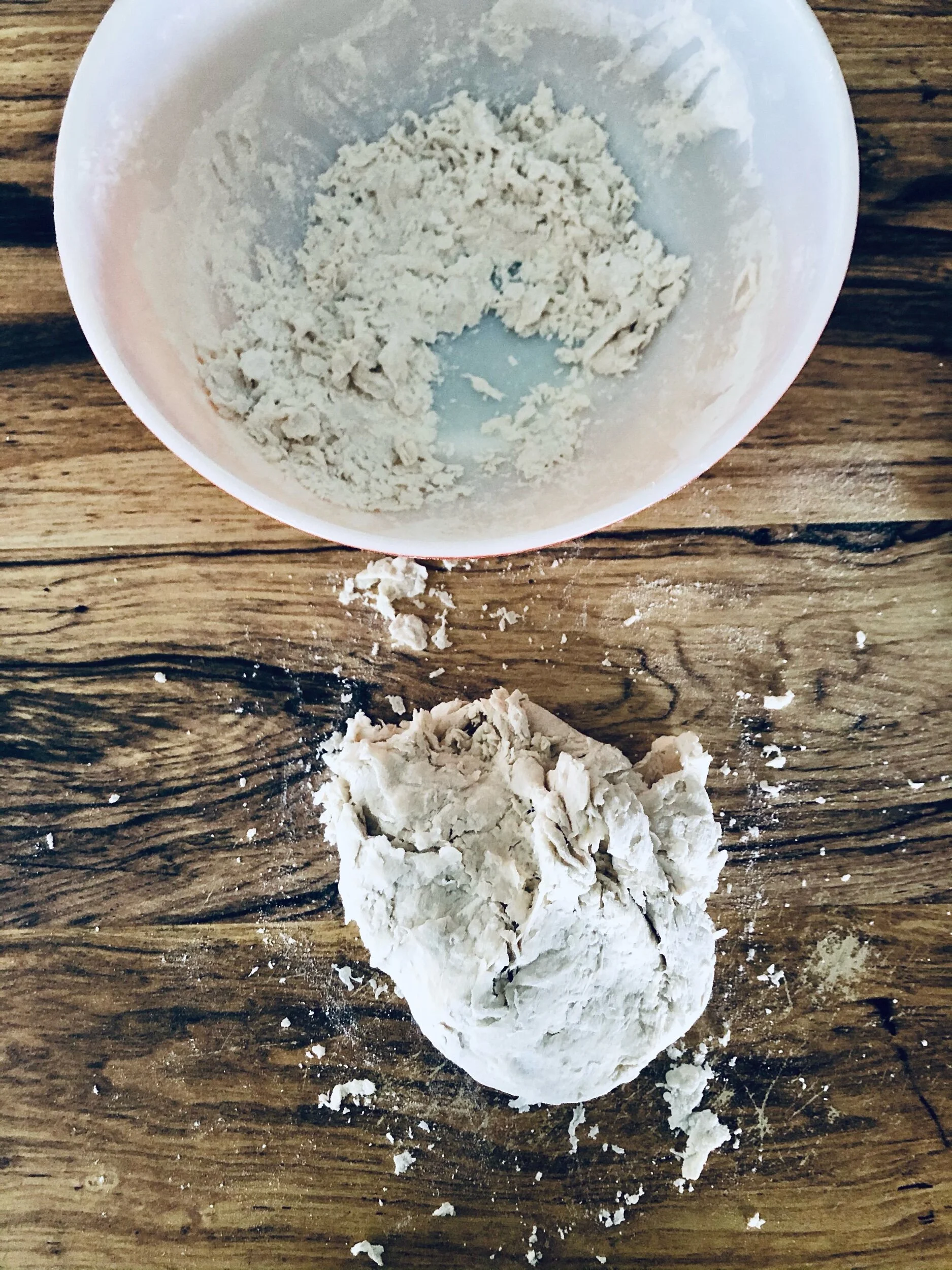A Simple Sandwich Bread Recipe for Beginner Bakers
Hey there baker!
If you are here to get started on all things bread baking, read Getting Started Baking Bread first. In that post, I share about my journey with bread baking which is relevant because I used to be YOU! Being a beginner at anything can be intimidating but not here! In this space we can do messy and build confidence at the same time.
Becoming an Intuitive Baker
Last month I gave you a very basic bread recipe to explore, and I do hope you tried it because I want you to compare last month’s process with this month’s. It’s easy to get caught up in “taste” when it comes to recipes, and although that’s important, it’s more important that you understand how dough actually transforms. At the end of that post I mentioned the relationship between wet and dry ingredients and this is a theme that will carry over no matter the bread recipe you come by. Understanding the space between sticky dough and dry dough is the knowledge you need to make intuitive adjustments as a baker. Every recipe is merely a guide but bread baking is a tactile form of cooking. You have to F E E L your way through it, and the only way to get a feel for it is to get busy with the mess.
In this recipe we are going to follow the exact same process as last time. The only adjustments we are going to make is to the liquid. Instead of using a cup of warm water which we did last month, we are going to use a 1 1/4 cups of milk. Everything else remains the same. The reason behind adjusting the volume of liquid in this recipe is for the yeast. Yeast likes to be warm and cozy, so using the warm water in the last recipe created an optimal environment for the yeast to do their thing. Imagine warming up your body in the cold winter snow, verse warming up in a steam room. The warmth and humidity of the steam room makes it easy to limber up whereas exposure to the cold causes muscles and joints to stiffen. Dough responds in a similar way. The milk (and I suggest letting it come up to room temperature if you can) is a bit of a shock to the yeast, and by adding a little extra liquid, you aid the dough’s pliability. It’s like the difference between wading into a cold pool verse diving into the deep end. Once you’re total submerged you can often find comfort. That’s kinda what’s happening in this recipe. The milk will make the dough a little stiff and so we will compensate for that by adding a little extra liquid. Remember, your bread journey is grounded in the wet verse dry relationship. If the dough is stiff, as in too stiff to knead well, it means your dough is too DRY (see picture at the bottom). You want the dough to transform from loose ingredients into a well combined ball of elasticity. This will allow for good oven spring while baking.
It’s also worth mentioning that YOU, as the baker, control the ingredients. Liquid volume is easy to put in a measuring cup but measuring dry ingredients like flour, can vary baker to baker. We all have a different methods for measuring. Do you shake off for a level cup of flour or do you slide off the excess for an even cup? Do you sift the flour or pack it in? These things will affect how the dough comes together which is why you need to stay mindful of the interplay between the wet and dry ingredients. Intuitive baking comes from the result of YOU knowing YOUR process. Are you ready?
A Simple Sandwich Bread Recipe
Ingredients
- 3 cups flour (extra for dusting your surface and as necessary)
- 2 tsp. active dry yeast
- 1 tsp. salt
- 1 1/4 cup of milk at room temperature
Directions
- Place all the dry ingredients in a large bowl.
- Add in the milk.
- Mix to combine so a dough begins to form and pulls away from the bowl.
- Form it into a rough ball and then turn it out onto a lightly floured surface.
- Gather the dough together and knead it for 10 minutes(maybe more) adding just enough flour to keep it from sticking to your hands and counter surface.
- Continue kneading until the dough is smooth and pliable and all the ingredients are well incorporated.
- Shape it into a round ball and place it into a large oiled or greased bowl and cover with plastic wrap or a damp cloth to rise for an hour or until doubled in size.
- After the first rise, knead the dough again on a lightly floured surface for another 5 or 10 more minutes, adding flour if necessary to keep from sticking.
- Then shape the dough to suit your loaf pan.
- Oil or grease the loaf pan and lay the dough in it, cover it, and let it rest for another hour or until it doubles in size.
- Preheat the oven to 375 degrees F.
- Score the top of your loaf with a few slits or markings.
- Bake for 35-40 minutes or until the internal temperature reaches 185 degrees F.
- When finished, carefully remove the bread from the pan and cool on a wire rack.
Tip:
After baking, brush the top of the crust with melted butter for some extra yum!
This is an example of a dough that’s too dry. The ingredients are not incorporating well. It’s very stiff and and will require a lot of kneading for form a pliable dough. Underkneaded dry dough is prone to tearing during baking because it doesn’t have much elasticity, also know as oven spring.
That’s it for now. Next full moon I’ll back with another bread recipe which will build ever so slightly off of this one. The goal this year for the Full Moon Baking Club isn’t to overwhelm your new hobby with complicated recipes. It’s to coach you through the bread making process one month or moon cycle at a time so one day you can feel confident baking your own recipe without one. Good luck!
